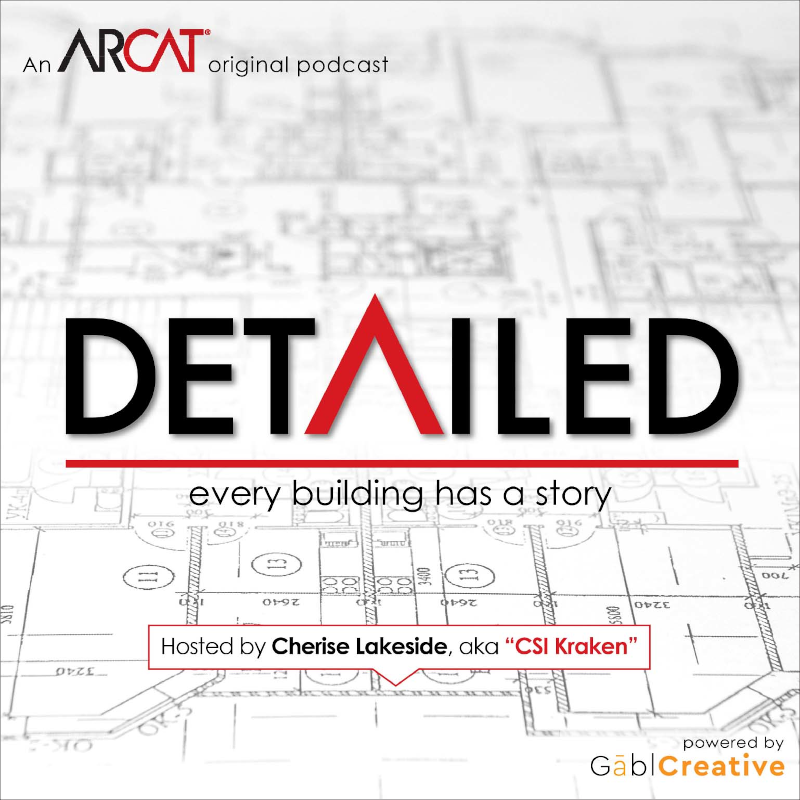|
Contributed by Eric D. Lussier Once upon a time, I wrote about a project we were awarded in an article titled ‘Not Quite Ready Yet’. That piece was a follow up to piece called 'Project Compaction: Not Just for Soil'. In that article, I had taken part in a pre-construction meeting on February 25th where the contractor asked if we could install flooring on a slab five days after the concrete pour. Needing to understand that one correctly, I said run that by me one more time? Their contract to us had flooring finishes being installed between March 21st and April 12th and as of that call, the concrete slab had not even been placed. Well, time flies and I’m here to provide an update on the project. Officially, we’re done as of Friday July 26th. Which all-in-all, isn’t horrible as that’s only three months and change behind the schedule that was dictated to us.
Numerous times in the last week I was struck by a recurring issue, and one that wraps up my trilogy on this particular project in one of the five boroughs of New York City. If you ask 100 people what they would like more of in the day, I would guess that a vast majority would answer time. Ask the modern marketer what one of their primary objectives is and most will tell you its to gain peoples time and attention. All the time we’re being reminded how our time is short and how time is of the essence and within construction, it always seems to be a race against time and before we know it, crunch time. Well, I beg to ask, in a business where time is money, and money is time, how did we get to a point where we seemingly no longer respect someone else’s time? So, on this project that we just wrapped, we were informed that there were site inspections scheduled for Monday on Friday the 19th. Now in a borough of 1.5 million people, I’m going to go out on a limb and guess that our customer, the General Contractor, had to schedule this inspection at least a few weeks in advance, if not a month or more. So, how is it we were told that we wouldn’t be able to work Monday, (which then turned into Tuesday as well) on a Friday afternoon?
2 Comments
Contributed by Liz O'Sullivan I think there’s a big problem with the way substitutions are often handled, at least here in Colorado.
CSI has some great solutions – for example, 2 different substitution request forms, one for use during bidding, and one for use during construction. MasterSpec has what I consider to be fairly decent language regarding substitutions, in Division 01. But these solutions are often not implemented. I think that “what we’ve got here is a failure to communicate” on several levels:
As a specifier, I sometimes add some language to the “acceptable products” list in each spec section that refers to the Division 00 section “Procurement Substitution Procedures” and/or Division 01 section “Substitution Procedures,” or if I have a Basis-of-Design product by one manufacturer listed, and a list of comparable manufacturers after that, I sometimes add language in each spec section that indicates that the contractor should “Comply with the requirements of Division 01 Section ‘Product Requirements’ for comparable product requests.” But as with everything else, the project architect still has to know what’s in the specs (and then enforce the specs), the G.C. still has to comply with the requirements of the construction documents (and make sure his subs do too), and the Owner still has to understand that proposed substitutions have to be very carefully evaluated since everything was designed around the specified product. I think this is where our work as CSI members lies – we should try to educate the rest of our industry about the roles that all parts of a project team play in this substitution process. __________________________________________________________________________________ This post originally appeared on Liz O'Sullivan's website as "Substitutions: Often a Quagmire, but CSI Can Help" WANT TO LEARN MORE ABOUT SUBSTITUTIONS & SUBMITTALS? The NEW Product Rep University Program at CONSTRUCT has been designed to meet the needs of Manufacturer's Representatives of Architectural Building Products, as integral members of the project team. The program features a full day of education (6 sessions) which includes 'Substitutions and Submittals: Not So Dirty Words' presented by Michael Chambers. Get additional details on the Product Rep University here: www.constructshow.com/PRU Download a Product Rep University flyer here. CONSTRUCT will be held October 9 - 11, 2019 at the Gaylord National Resort & Convention Center in National Harbor, MD. Read more on CONSTRUCT here. ) Contributed by Michael Chambers In my perspective from the back of the bus, I often wonder why so many product representatives feel ineffective or intimidated calling on architects. Granted, some architects can be quite a treat. The terms argumentative, aloof, know-it-all, unapproachable, abstract, and expletive deleted are often mentioned. Have you ever stopped to wonder why?
Without trying to defend architects, consider that often an architect’s attitude towards product reps is the result of being misled or over-sold on the applicability, features, and benefits of construction products. Look at a typical reaction to telephone marketers or used car salespersons, what is it that is so offensive? I would suggest two aspects. First, the unrelenting hard-sell without having any idea of your needs or interests; and second, the underlying attitude that the product offered is the only possible choice and how could an architect be so stupid not to immediately understand? Unfortunately, product representatives must overcome the back wash of less enlightened sales types that have gone before them. However, it is relatively easy to overcome this type of resistance by using a solution-oriented approach rather than a typical product-oriented approach. Architects are primarily concerned with finding the most appropriate range of solutions not the best or greatest product. In a survey done (editor's note: many years ago) by McGraw-Hill Sweets, architects were asked what they wanted from product representatives. The top 2 results were ‘recommended uses & application of products (92%)’ and ‘guide specifications (88%)’. The last choice was ‘manufacturer’s history, experience, overall capacities & range of products (40%)’. This means that architects want to know how to appropriately apply and integrate products into their designs, not be confused by competitive features and benefits. The need for guide specifications clearly indicates the need write clear, competitive, and enforceable specifications. Lastly, horror of all horrors, the least thing architects want to know is about your company. Another critical element for effective architectural sales calls is the ability to listen. Practically every time a rep calls on me, the first words are about company history, the president’s ancestors, and how many products have been installed in Outer Slabovia last week. Next, we hear how many years he or she has been in the business, how big their territory is, on and on. Then, a guided tour through the product binder, page by page by never ending page. In all this time, usually 30 minutes, never once has the rep asked about projects, how products are selected, are the office master specifications up-to-date, and the like. The best advice I can offer for effective architectural sales calls is to SHUT-UP AND LISTEN!!!! You will be amazed by the knowledge and insights you can discover about what the architect knows and wants to know about your product. There is a definite reason why the Creator gifted us with 2 ears and one mouth. Here is the outline that I used when making architectural sales calls. These are basic issues and touch points that I found highly effective when dealing with project architects, curmudgeonly specifiers, and firm principals. Contributed by Roy Schauffele Late fall and during all winter, concerns and problems arise with air barrier applications on CMU (Concrete Masonry Unit). I know because I get the phone calls. Generally speaking, the fluid applied water-based vapor permeable air barriers go on OK but take a long time to cure or set.
Additionally, I’ve observed a myriad of job site problems with self-adhered vapor impermeable sheets, flashings and tapes. The vapor impermeable materials were applied properly but exhibited blistering and lack of adhesion within days. When investigated there was always liquid water on the adhered side of these sheets. Observations of quite a few jobs leads me to state that, in this investigation, the vast majority of “problem” jobs had the following in common:
OK, let’s deal with what will lead to an excellent new construction air barrier installation and long-term performance: 1. If the Architect/Specifier has specified a dry water repellent in the CMU, it is already causing a potential problem with the adhesion of a water-based air barrier or primer. This issue has been written about previously in an article in Coatings Pro Magazine July 2018 “Legacy Specifications, Wall and Air Barrier Performance”. The Air Barrier installer absolutely needs to make the Architect/Specifier aware of this prior to bid. 2. If the project is wide open with doors, bay doors and windows not finished or openings not protected from water entry, then a tremendous amount of water can enter the CMU causing some of the problems referenced above. The top of the walls and window openings should be treated in such a way as to prevent water from running in to these open areas. One of my friends and great technical writer in Austin, TX, Mr. Dave Watts, RA, has the following statement in his specifications: Section 04 20 00, 3.18 PROTECTION OF FINISHED WORK, 3.18.e “Protect tops of masonry with waterproof coverings secured in place without damaging masonry. Provide coverings where masonry is exposed to weather when work is not in progress.” Contributed by Jori Smith So, you have a non-Design-Bid-Build (DBB) project on the boards? Hurrah!
Collaborative project delivery methods such as Construction Management At-Risk (CMAR) have a proven track record of improving project outcomes for everyone. This is a different way of doing things though, and we all must adapt to the new normal. Are you evolving, or hanging on to old habits? Here are some ways that the A/E (Architect/Engineer) team can short circuit a successful process. Having Meetings Without the Contractor Anticipate that your builder will be included in all project planning activities and emails. A truly collaborative team works together as much as possible and appreciates the extra brain cells solving problems. The project benefits from builder attendance even at programming sessions with users, where the opportunity to learn about the priorities of both the client and the designer will affect feedback down the road. Not Taking Advantage of Your Partner's Field Skills Camera scoping of existing piping, roofing cores, investigative demolition inside walls or above ceilings, and surveying. I've had to BEG designers for lists of field verifications helpful to the project. This is a chance to change the reliance upon as-built documents provided by the Owner. Can we reduce, or even eliminate "unforeseen" conditions? Dare to dream! Figuring it Out on Your Own The construction team brings access to trade skill sets and constructability experience. In addition, they have been exposed to a diversity of project experience with multiple designers - some of whom might have had a great idea or two. We want to help you solve system/assembly problems while the project is still in design. Letting the Engineers Put Off Progress Until You Finish "Moving Walls" This is one of the most effective ways to cut the pre-construction process off at the knees. The builder cannot provide the estimating and constructability services we've been contracted to do when provided empty floor plans on the engineering sheets. Anyhow, BIM is forcing the team to make decisions earlier too, so this is a habit that needs to be broken. Leaving Out the Details The project will still be competitively bid by, all or most of the subs, and they need that information for an accurate scope. Sure, the builder at the pre-construction table heard you say “that” months ago (and may even remember), but she/he can’t be charged with communicating your design decisions to the bidders –unless you want to let her/him have the authority for those decisions. To maintain control of design and protect the Owner from unnecessary change costs, a fully complete set of construction documents must be provided. Forgetting About the Bidding Documents Again - the subcontracts are still being competitively bid. Additionally, all of Division 01 likely still applies and will require a thorough review by both teams, as changes are generally needed to align the requirements with the project delivery method. Not Taking Advantage of Scheduling Options Changes are inherent in the pre-construction process. We're working together to make them now, instead of later – because later costs the owner money in change orders. This is an opportunity to reconsider putting out incomplete or uncoordinated drawings just to hit a milestone date. Ask how your builder can adapt the schedule to give you more time to finish. Early work packages are a fantastic tool. Give me the foundation and steel, I'll get started while you finish the door hardware schedule. Fast track concepts are easily incorporated into these projects. I’ve had several A/E professionals tell me that public procurement must be DBB. Not so! There are several states which are allowing CMAR and Design-Build. Encourage your lawmakers to open the process and allow other project delivery methodologies. While no delivery method is perfect, there are definite advantages to be had from partnering with the construction team - leading to a more successful project for all. |
AboutLet's Fix Construction is an avenue to offer creative solutions, separate myths from facts and erase misconceptions about the architecture, engineering and construction (AEC) industry. Check out Cherise's latest podcast
Get blog post notifications hereArchives
March 2022
Categories
All
|






 RSS Feed
RSS Feed
